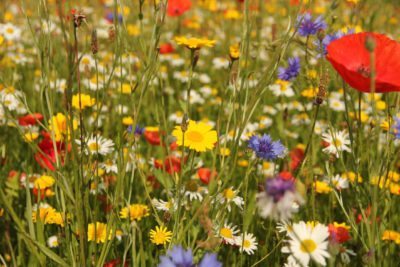
Growing wildflowers is a great way to add color and variety to a garden. Wildflowers may be native or not, but they definitely add a more natural and less formal look to yards and gardens. For zone 6, there are a number of great choices for wildflower varieties.
Growing Wildflowers in Zone 6
There are wildflowers for every region of the USDA map. If your garden is in zone 6, you’ll have a lot of options. This zone stretches across the U.S., including regions in Massachusetts and Connecticut, most of Ohio, and parts of Illinois, Missouri, Kansas, Colorado, New Mexico, and stretching up to the interior areas of the Pacific Northwest.
If you choose the right wildflowers for zone 6, enjoying them in your garden will be easy. Simply grow from seed after the last frost and water until your flowers are about 4 to 6 inches (10 to 15 cm.) tall. After that, they should do well with normal rains and local conditions.
Wildflower Zone 6 Varieties
Whether you are adding wildflowers to one bed or creating an entire wildflower meadow, it is important to choose varieties that will grow well in your climate. Luckily, zone 6 wildflowers are abundant. Choose several varieties and make a mix that will include a good range of colors and heights.
Zinnia – Zinnia is a pretty, quick-growing flower that produces orange, red, and shades of pink. Native to Mexico, these are easy to grow in most zones.
cosmos – Cosmos are also easy to grow and produce similar colors to zinnias, as well as white, although the blooms and stems are more delicate. They can grow up to six feet (2 m.) tall.
Susan de ojos negros – This is a classic wildflower that everyone recognizes. Black-eyed susan is a cheerful yellow-orange bloom with a black center that grows up to two feet (0.5 m.) tall.
Florecimiento de maíz – Also known as bachelor’s button, this flower will add a pretty bluish-purple color to your beds or meadow. This is also a shorter wildflower, staying under two feet (0.5 m.).
Wild sunflower – There are many types of sunflower, and wild sunflower is native to the plains of the U.S. It grows to about three feet (1 m.). It is one of the easiest flowers to grow from seed.
Prairie phlox – Native to several Midwestern states, the prairie phlox flower produces full, pink clumps that are great for filling in spaces.
Johnny jump-up – This is another good short variety of zone 6 wildflowers. Johnny jump-ups stay less than one foot (30.5 cm.) in height and produce bright flowers that are purple, yellow, and white.
Dedalera – Foxglove flowers are delicate bells clustered on tall spikes, growing up to six feet (2 m.) tall. They add good vertical color and texture to a meadow or bed. Be aware if you have kids or pets that these are toxic.
There are many more varieties of wildflowers for zone 6, but these are among the easiest to grow and will give you a good range of height, color, and texture.

